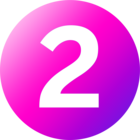I will be using the survey as an exam and would like to send a reminder to students that there is 10 mins left. Moreover, my questions are all randomized, so I cannot insert a page after X amount of questions. I will be keeping the time (aka, I don't have a code in place as a timer because of the questions randomization). Is there a way I can send a message to the current participants (as a pop-op window or similar, but not an email as they might not be looking at their email while anxiously filing out the exam)? Or include a page within the survey that would change even the partial completes link (and not just be applicable to new participants)? Or am I just asking too much from Qualtrics programming? Ha! Ha!
Solved
Send message / incorporate new page in survey while in progress
 +1
+1Best answer by TomG
They aren't the same question. Off hand, I don't know how you would change the message if you close the survey. You could control the message if you automatically end the survey 90 minutes after the respondent starts using a slight variation of the method I described above.
Enter your E-mail address. We'll send you an e-mail with instructions to reset your password.


